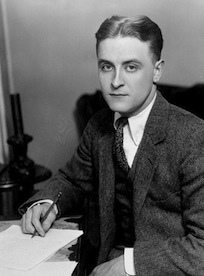My favorite writer, F. Scott Fitzgerald, is often credited for authoring “the most perfect novel,” The Great Gatsby. Before Gatsby, however, he wrote This Side of Paradise— a work that, while responsible for catapulting its author to literary stardom, is often said to be so egregiously far from perfect in terms of story development and grammar that it has attracted the ridicule of many literary critics when it was first published. Nonetheless, it is worthy of study for it shows most honestly Fitzgerald’s process as an artist.
The Warrior. Fitzgerald was, first and foremost, a warrior. While still an undergraduate at Princeton, he immediately knew that he was determined to make his mark in the literary world. He wanted to do it quickly, too, for it was the time of war and death could come any moment. And so, we often hear stories about how young Fitzgerald sneaked to write paragraphs and paragraphs of prose amidst his military duties. When he fell in love with Zelda Sayre, he knew that what was at stake now was more than just literary fame, and so he made even more haste.
The Judge. What resulted was a novel of massive proportions. The Romantic Egotist, the novel’s first title, contained all the stories and poems Fitzgerald wrote in Princeton. There was no time for editing—he was in a hurry to make his name and win Sayre. Publishing house Scribner’s was ready to reject his manuscript, but junior editor Maxwell Perkins, who was eventually to become his longtime publisher and friend, saw in The Romantic Egotist immense promise. It had to be rejected for a second time before Fitzgerald finally sat down and proceeded with a full-scale revision. He changed virtually every scene, scrapped some, and added several to fortify the protagonist Amory Blaine’s character development. He changed the characters’ names and the book’s title. When the revised manuscript reached Scribner’s, they found it was ready for publication.
This was not entirely true. While the finished book was undoubtedly a work of art, it contained an alarming amount of spelling and grammatical errors, which literary critics were quick to point out. Fitzgerald would learn from this (although he would be known in history as- like his friend Hemingway- a perennially bad speller), and would edit his future stories viciously—sometimes even when they were already at the printers, all ready for publication.
The Explorer and Artist. This Side of Paradise, despite its multitude of errors, was an astounding success. Fitzgerald, then twenty-three years old, arrogantly predicted that the novel would sell twenty thousand copies that year, but it went on to sell forty thousand. This Side of Paradise was a work of art because it was new and relevant. No other novel was able to capture more realistically and profoundly the thoughts and actions of the youth not just of the 1920s but also of all generations. Fitzgerald was a masterly chronicler of the life of the youth because he was an astute observer. He drew from his own life experiences and from his memories of Princeton, and manipulated them so imaginatively that no one was able to transpose the zeitgeist onto paper more truthfully. And so, This Side of Paradise, for all its shortcomings, quickly established its author as an important novelist and ushered the literary world into a new genre—the Jazz Age. I wonder if the young Fitzgerald, feverishly jotting down verses and paragraphs after lights-out in military camp, even for all his arrogance and idealism, was able to foresee the magnitude of his success.
Perhaps a way to more accurately describe Fitzgerald’ journey as an artist is to compare him with his first protagonist, Amory Blaine. Like Blaine’s tortuous path of self-discovery, Fitzgerald found that being a good writer was not as simple as being a warrior, as fearlessly putting one’s self out there. He cultivated the virtue of editing, and with his unparalleled imagination and knack for observation, made for himself a niche that was entirely his own. And so, perhaps with incisive existential poignancy, Fitzgerald’s Blaine exclaims to himself, “I know myself, but that is all.” Always true to himself and to his passion, Fitzgerald’s odyssey began with a voracious desire to become a famous writer and ended with writings, indeed betraying his passion–stylized musings of an ageless myth-weaver of a generation, exploiting its weaknesses, exaggerating its wants and exploring its possibilities.
*Works consulted:
Introduction to The Price Was High: Fifty Uncollected Stories of F. Scott Fitzgerald
Introduction to the Enriched Classic edition of This Side of Paradise
Introduction to Scribner’s edition of Pat Hobby Stories









